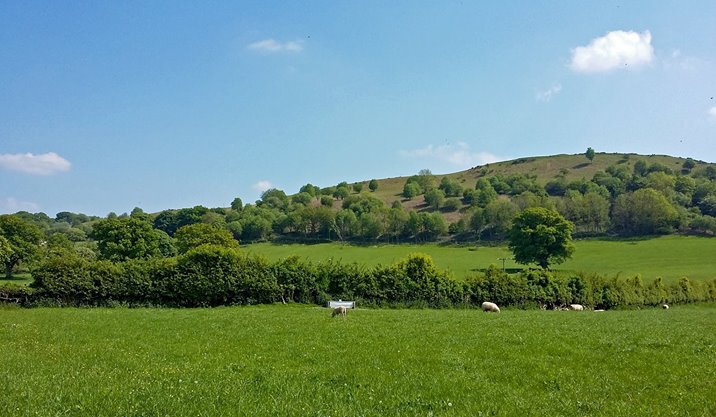THE RISING OF 1294 – 1295 AND THE BATTLE OF MAES MOYDOG
There were several insurrections against English rule following the death of Llywelyn ein Llyw Olaf at Cilmeri in 1282. One of the most significant was the Rising of 1294 – 1295, the main leader being Madog ap Llywelyn from Gwynedd who many regarded as the lawful successor of the Prince of Wales.
The rising was carefully planned to coincide with King Edward I and his vast army’s departure to France. Unfortunately for the Welsh bad weather had delayed the crossing and the king and his army were still in Portsmouth when news reached him of the insurrection and the planned invasion of France was cancelled.
In September 1294, Geoffrey Clement, the justice of South Wales was returning from a meeting with the king when he was ambushed and killed at Gamrhiw near Builth and this was the signal for Wales to rise. It was a national insurrection with coordinated attacks on castles throughout Wales. Other leaders were Cynan ap Maredudd and Maelgwyn ap Rhys of Deheubarth and Morgan ap Maredudd of Morgannwg.
By October 1294 an army of 35,000 men had gathered at Chester, Shrewsbury and Hereford and began to move into Wales. On 7/8 January, Edward was at Bangor where he welcomed the Archbishop of Canterbury, but he had penetrated too far into the mountainous area with only the vanguard of his army. The Welsh rushed down, capturing the baggage train and forcing Edward to retreat to Conwy Castle. Supplies in the castle ran short and there was a fear of starvation. Floods and high tides prevented help getting through. The chronicles state that the king refused a small cask of wine for his own use and had to make do with honey mixed with water. Madog could not afford the time and resources in besieging Conwy and by 24 January a relief army under the Earl of Warwick had arrived and the blockade was raised.
Madog needed the support of the men of Powys and on 4 March 1295 was camped overnight on flat ground between Moydog Uchaf and Moydog Wood near Llanfair Caereinion. The Earl of Warwick made a night march and the following day had surrounded Madog’s army which was then formed into a square with his spearmen successfully resisting the initial English cavalry charge. Using archers and crossbowmen placed between the men at arms, the Welsh were routed with many drowned crossing the Afon Banwy. Losses are put at 700 Welsh and 100 English.
Madog escaped but the revolt ended in July when he was captured. He spent the rest of his life as a prisoner in London.

